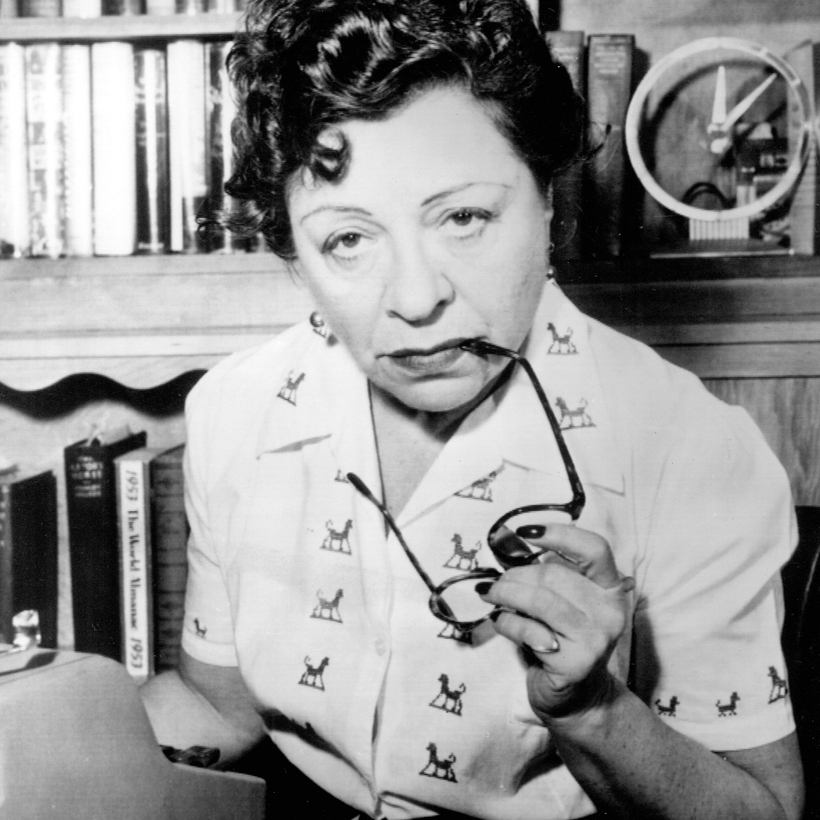Do you prefer to work with the living or the dead? Ask any biographer, wherever biographers gather, and they will offer a vigorous opinion on this question. I fall squarely into the “safely dead” camp.
Biographers are, in part, professional Peeping Toms, who pull back the curtains of privacy and share what they find. Unsurprisingly, the living often object to strangers rummaging through their lives. Who can blame them? But I find it far more difficult to do this work if I fear hurting people’s feelings or stepping on their toes, always worried that a subject might stonewall or sabotage the project.
My motto is: The dead may not give up their secrets easily, but they rarely hire lawyers.
In choosing Polly Adler—an infamous and influential madam in Jazz Age Manhattan—as the subject of my second book, I thought I’d hit a sweet spot. “The Queen of the Underworld,” as the tabloids dubbed her, was safely deceased (she died in 1962) but not so long gone that the trail of evidence had grown cold. From 1920 to 1945, Adler’s brothels served as slummers’ salons where the culturati and café society partied with the elite of showbiz, politics, and organized crime.
The Queen and Her Underworld
My instincts were rewarded. I discovered scrapbooks, photo albums, F.B.I. files, correspondence, and hundreds of appearances in newspapers, magazines, memoirs, and gossip columns. She’d even published a best-selling, albeit whitewashed, autobiography. It was more than enough to bring her scandalous story to life.
Yet, every so often, the sound of a living voice would give me pause. There was the elderly cousin who recalled the pretty girls—“Ruby Keeler! Martha Raye!”—whom Adler brought to family dinners in Brooklyn. And the interview with the artist Don Bachardy, who lamented that if I’d only called a few years earlier Hollywood would have been brimming with former friends of Adler’s.
But I never truly regretted my prejudice until I spoke with Max Gurshunoff, an octogenarian who, as a young man, had befriended Adler near the end of her life. Her health was failing, and she often seemed to be brooding on the past. “She spoke much about the hypocrisy of society,” he remembered.
Adler’s brothels served as slummers’ salons where the culturati and café society partied with the elite of showbiz, politics, and organized crime.
One afternoon they were driving in Los Angeles together when, out of the blue, she mentioned that she had known Franklin D. Roosevelt. To Gurshunoff’s astonishment, Adler explained that “she had something to do with the opposition to Roosevelt when he was governor of New York, running for president.”
Not just that, he recalled. “She said that F.D.R. was one of her clients and that she was being taken care of for the rest of her life by the contributions of Democrats.”
Her tone was matter-of-fact, neither boastful nor resentful. She was vague on the details, but Gurshunoff’s impression was that she had remained silent in return for a substantial and steady financial payoff. As he put it, “She had to suppress a lot politically because they would cut her off.”
I spent countless hours trying to confirm the truth of Adler’s claim. I did find strong circumstantial evidence, but never enough to unravel her secret. I had waited too long and demanded too much from the grave.
Debby Applegate’s Madam: The Biography of Polly Adler, Icon of the Jazz Age is out on November 2 from Doubleday

